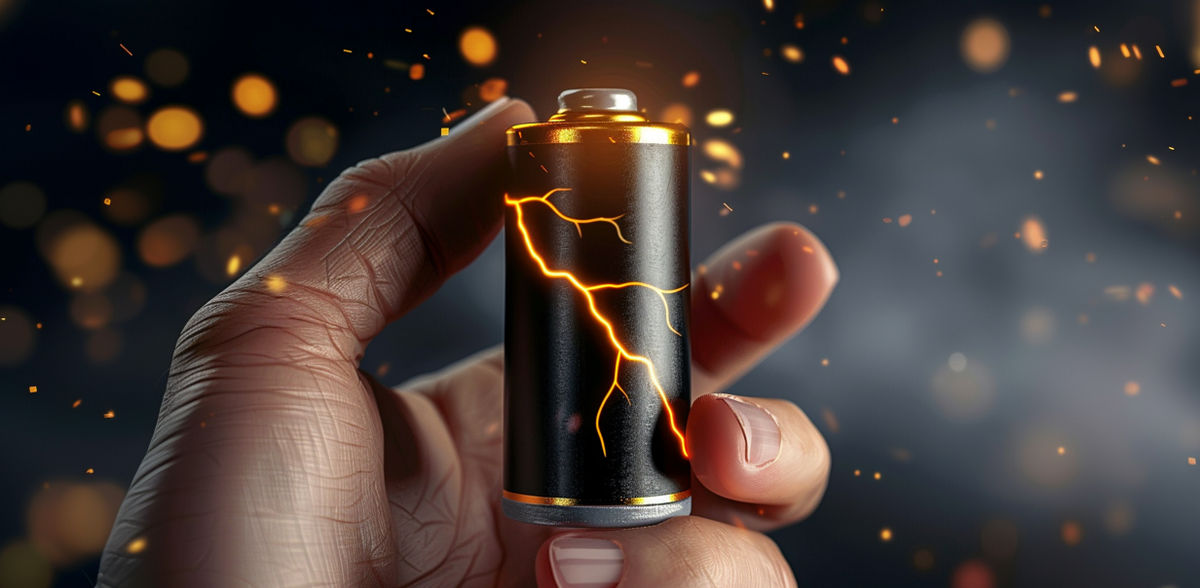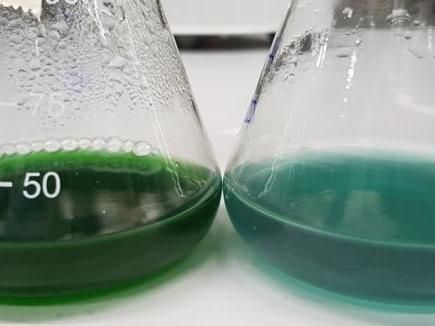More efficient, lighter, more sustainable: researchers develop next-generation batteries
Completely new approach
Scientists at TU Darmstadt have achieved an important success in battery research: Using a new technology, they have succeeded in significantly improving the efficiency and charging properties of so-called zinc-air batteries. Their research results have now been published in the journal "Small".
Zinc-air batteries are among the oldest and most efficient chemical battery storage systems. The voltage in them is generated by a reaction of metallic zinc with oxygen from the air. The batteries are used, for example, as button cells in hearing aids and, in a larger form, in the operation of electric fences and signal lamps.
However, these energy storage devices also have serious disadvantages: they are not yet rechargeable. They also require electrodes made of metallic zinc, which should be used as fully as possible to ensure rechargeability and a high charging and discharging capacity. However, as this has so far only been possible with an efficiency of around 50 percent, the metallic anodes are always oversized. As a result, production is not very resource-efficient and the batteries are unnecessarily heavy and unsuitable for all types of mobile applications.
"You can think of this as the dead volume of a certain amount of gasoline - to use the image of fossil transportation energy - which can never be extracted from a tank, but ultimately always has to be carried along to make operation possible in the first place," explains TU chemistry professor Jörg J. Schneider. Another shortcoming of zinc-air storage technology in its current form: During repeated charging, rod-shaped crystal structures can form, so-called dendrites, which damage or even destroy the battery.
Completely new approach
Schneider's research group in Inorganic Chemistry solved these problems with a completely new approach: instead of using metal anodes and cathodes, the scientists carry out the charging and discharging process directly from a homogeneous electrolyte solution. The electrolyte is an integral part of every battery and, in the new concept, serves both as a conductive medium and as a source for the deposition and dissolution of the zinc anode. "By depositing and redissolving the active metal zinc directly from a solution on a nanostructured carbon electrode, we are initiating a paradigm shift," says Daniel Deckenbach from the research group. "We have thus succeeded in developing functional and powerful rechargeable zinc-air batteries."
With the new technology, the batteries can be recharged more than 200 times with high power and energy density. There is further potential for optimization here. However, the usability of the chemically stored energy is already almost completely reversible - the so-called depth of discharge is 92 percent. "As no more metal electrodes are required to operate the battery cell and only a minimum of chemical substances are needed, efficiency is significantly increased and we achieve enormous weight savings compared to previous zinc-air storage systems," emphasizes Schneider. "Rechargeability with low system weight and high resource efficiency are the key benefits of our development."
Note: This article has been translated using a computer system without human intervention. LUMITOS offers these automatic translations to present a wider range of current news. Since this article has been translated with automatic translation, it is possible that it contains errors in vocabulary, syntax or grammar. The original article in German can be found here.
Original publication
Other news from the department science
Most read news
More news from our other portals
See the theme worlds for related content
Topic World Battery Technology
The topic world Battery Technology combines relevant knowledge in a unique way. Here you will find everything about suppliers and their products, webinars, white papers, catalogs and brochures.

Topic World Battery Technology
The topic world Battery Technology combines relevant knowledge in a unique way. Here you will find everything about suppliers and their products, webinars, white papers, catalogs and brochures.































































